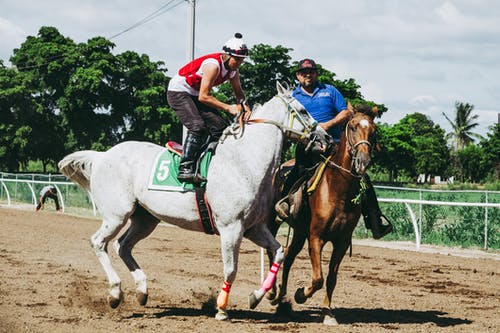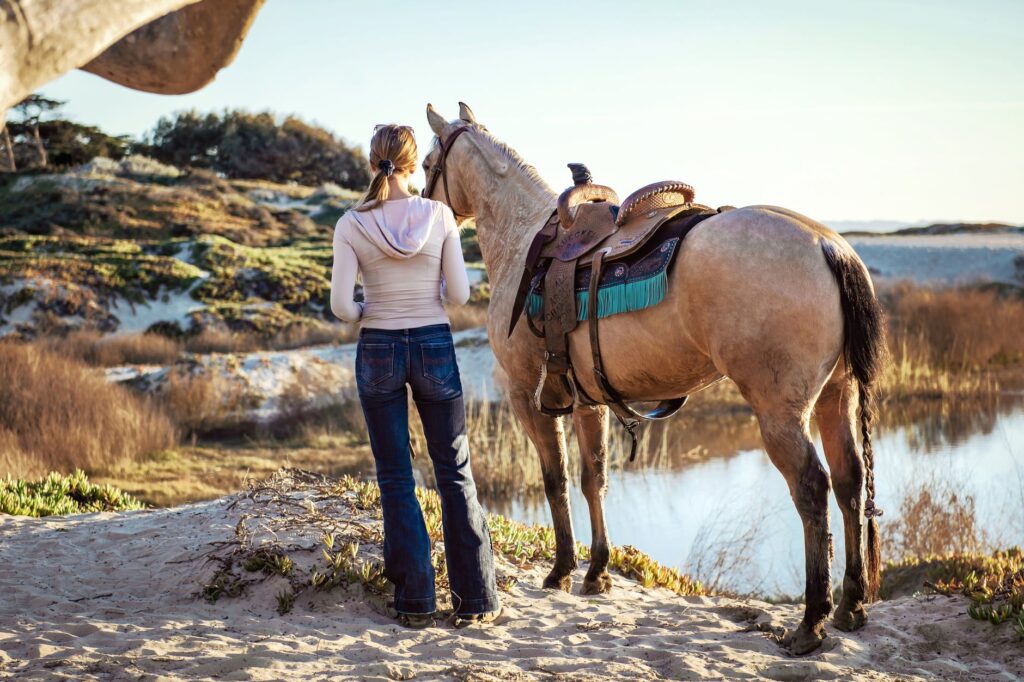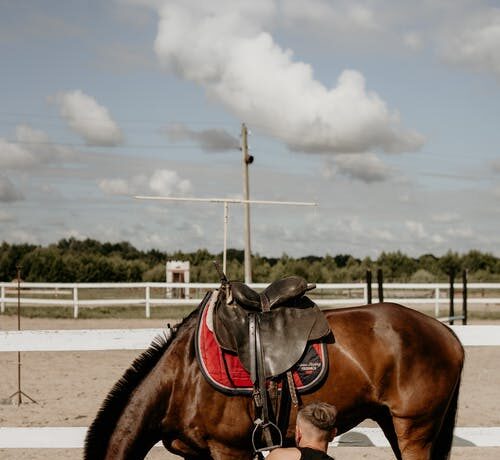You must have a girth and cinch in your tack inventory. They help your horse remain comfortable while maintaining the saddle’s stability and position. You must choose the right girth or cinch for your horse in order to provide maximum comfort and performance. The Riding Warehouse Gals have put together a guide so you can quickly assess your alternatives because there are numerous aspects to take into account while making this choice.
To start, it’s critical to understand the distinctions between a cinch girth. Cinches, which are attached to the off-billet on one side and the latigo on the other of a Western saddle, have one huge buckle on each end. Dressage, jumping, and all-purpose English-style saddles all have girths. They typically have two buckles on either side to fasten to the billets of the saddle. Western cinches, also known as front cinches, are generally of the same sort but can vary in terms of shape, material, and buckle design. They can be any size between 24″ and 38″, and are generally sized in 2″ increments. Depending on the sort of saddle you use, there are various girth types. Monoflap jumping saddles and dressage saddles often have lengthy billets that reach below the flap and call for a short girth that measures 20 to 30 inches. Other jumping saddles, such as close-contact or all-purpose saddles, require a longer girth that normally varies from 40″ to 56″, and they feature much shorter billets.

Given that riders might use Western, English, Endurance, or Australian saddles, the rigging of your saddle will determine the type of endurance girths and cinches you need. You will need a girth if your billets are English-style, and a cinch if your billets are Western-style. For their unique rigging, some Australian saddles require an Australian-style girth. Grab a pal and a gentle tape measure to take the girth measurement. Have a friend hold the tape measure in inch increments at about the middle of the billet hole on one side. Stretch the tape from the billet hole on the opposite side of the saddle over the horse’s barrel to the saddle. Your horse’s “estimated size” will be this. You can learn more by watching our instructional video on how to measure an English girth or by reading our article on how to measure and fit a dressage girth.

You will also require a pal and a delicate tape measure to measure for a cinch. Have a friend hold the tape measure at the D-ring on one side of the saddle and use inch increments. Stretch the tape from the D-ring on the other side to the area under the horse’s barrel. Subtract 16 from this measurement once you have it “your entire amount. You will then have 8 “there is room on both sides, between the saddle dee and the cinch buckle. By maintaining this spacing, you may avoid riding with too much leather covering your legs.




